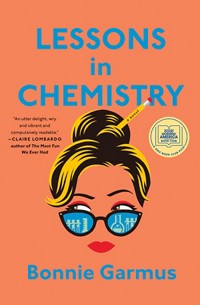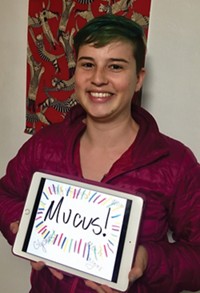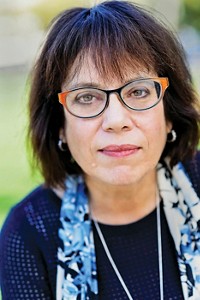Advertisement
Grab your lab coat. Let's get started
Welcome!
Welcome!
Create an account below to get 6 C&EN articles per month, receive newsletters and more - all free.
It seems this is your first time logging in online. Please enter the following information to continue.
As an ACS member you automatically get access to this site. All we need is few more details to create your reading experience.
Not you? Sign in with a different account.
Not you? Sign in with a different account.
ERROR 1
ERROR 1
ERROR 2
ERROR 2
ERROR 2
ERROR 2
ERROR 2
Password and Confirm password must match.
If you have an ACS member number, please enter it here so we can link this account to your membership. (optional)
ERROR 2
ACS values your privacy. By submitting your information, you are gaining access to C&EN and subscribing to our weekly newsletter. We use the information you provide to make your reading experience better, and we will never sell your data to third party members.
People
Movers And Shakers
Kathryn Harkup: science communicator, best-selling author, and goth enthusiast
Harkup discusses her transition from a lab chemist to telling stories about science
by Dalmeet Singh Chawla, special to C&EN
December 27, 2023

If you’ve ever wondered about the science behind some popular-culture classics such as William Shakespeare’s plays, Agatha Christie’s writings, or James Bond films, Kathryn Harkup is your go-to author. After completing her research on phosphines, she decided that she enjoyed talking about and communicating science more than actually doing it.
Harkup, who began her newfound calling in public outreach, became a published author in 2015 and has published seven books to date. Her 2023 book, The Secret Lives of Molecules, delves into the roles that 52 molecules play in shaping the world around us.
Dalmeet Singh Chawla spoke with Harkup about her unique career trajectory, challenges she’s had to overcome, and plans for future books. This interview was edited for length and clarity.
Vitals
▸ Hometown: Maidstone, England
▸ Education MChem, University of York, 2000; PhD, University of Nottingham, 2004
▸ Best advice received: Closing your eyes and thinking about penguins stops hiccups
▸ Most intriguing research project: The scientific backstory to Mary Shelley’s Frankenstein
▸ Interesting fact about herself: I am distantly (very distantly) related to the first actor to play James Bond.
▸ Favorite chemical: Phosphorus, the most gothic of the elements
Why did you choose to move away from the lab and go into science communication?
I loved chemistry at undergrad and I like learning, so I decided to continue on with it and do a PhD. But I didn’t enjoy my doctorate very much—but I didn’t know if I didn’t enjoy research or if I had gotten to the end of my path with chemistry. So I decided to do a postdoc, spending 2 more years working in the lab. By the end of it, I decided that it was the research side that wasn’t for me. I’m not particularly good at practical research.
I much prefer talking, explaining, and demonstrating science than I like doing it in a lab. So I made a conscious decision to explain chemistry to schoolkids, the general public, and whoever would stop long enough to listen.
So you turned that into your career. Can you tell me about your first role after your postdoc?
I took up a public engagement role at the University of Surrey where I was going into schools, encouraging teenagers to study science and engineering at a higher level. I’m sure you appreciate that if you go into a school and you talk to teenagers and you mention the words science and engineering, a huge portion of the audience will almost instantly go to sleep.
I had to find a way to at least keep them awake. I did that by telling them things like how to poison someone, and they would pay attention to that. But you can also sneak in some chemistry that they will understand from class.
It’s a rather dark application. But you can also talk about forensics and lots of other applications of science in a kind of gothic and gory context. Teenagers love gothic and gory. Even if they didn’t pursue a career in science later, they maybe turned up to their next science lesson slightly more engaged.
Are there any safety implications of talks like these?
I’m quite happy to explain in quite a lot of detail how to poison someone. I usually told the children about poisons that are difficult, if not impossible, to get hold of today because of various regulations. I also told them very explicitly how they were going to get caught.
There were also talks and workshops on other topics. For instance, there was a great one on what materials you need to create a refugee camp and the engineering aspects of that.
When did you decide to start writing books?
After a few years of my public engagement role, I left the university and decided to go it alone. My time at Surrey was great. I learnt a lot, but I wasn’t actually talking only about chemistry, which was my subject, but rather representing all the sciences and engineering. I wanted to get back to chemistry.
So I started writing a blog about the periodic table while I looked around for work, and a publisher got in touch with me and asked me if I wanted to write a book.
Your first book, A is for Arsenic: The Poisons of Agatha Christie, is an international bestseller. How did you decide on its topic?
It was a conversation with the publisher. They asked me what I thought would be interesting to write about. I said poisons because it’s what had engaged the schoolkids when I went out and talked to them. Everyone loves a good poisoning, so why not write about that?
I find it easier to write about something that I have talked to people about because I know what sort of questions they ask. I know how I can explain things better because I’ve had a conversation about it first. Doing outreach and public engagement is actually really helpful for the writing process even though it’s not physically writing things.
Researchers are taught to write in a certain style. How did you adapt to writing for a different audience?
Writing scientific papers is a very set style, and it is very important to stick to that style because that is how ideas and information are conveyed effectively, efficiently, and without any ambiguity—but it can be a bit dry to read.
I never quite mastered the art of proper scientific writing. I was always using general terms rather than specific ones when I was writing lab reports, which would get me into trouble then but now I think is to my advantage as a writer to the layperson.
You’ve since written many more books, such as Making the Monster: The Science behind Mary Shelley’s “Frankenstein” and Death by Shakespeare: Snakebites, Stabbings and Broken Hearts. How do you start out explaining a topic?
I pick something in popular culture that people are familiar with—like James Bond, William Shakespeare, or Agatha Christie—and I try to sneak in some science that they’re half familiar with. I just give it a bit of context, a bit of explanation, and a little bit more depth, and hopefully interest them a bit more that they might go to another book that has a bit more detail about it.
I’m not really going into fantastic detail about any of the science. I’m just giving people tasters that might pique their interest and encourage them to explore further.
Death, dark, poisons, vampires, and monsters seem to be your forte. Do you have a gothic side?
I do, yes. My time in the lab also involved using some pretty nasty stuff. Every bottle had a skull and crossbones on it.
Is being an independent author a financially stable career?
My first book was published in 2015, but I only became able to live off my writing 2–3 years ago. I had to do other stuff like tutoring, which was extremely helpful for the writing because it makes you a better explainer of ideas. I still do an awful lot of speaking and talking; I enjoy it and it supplements my income.
The Secret Lives of Molecules, your seventh book, was published this year. What’s next?
I’m going back to Agatha Christie for my next book. Bless her, she used so many poisons in her books that I am not done with her!
The general public’s appetite for murder and the gorier side of things shows no sign of abating.
Dalmeet Singh Chawla is a freelance science journalist based in London.





Join the conversation
Contact the reporter
Submit a Letter to the Editor for publication
Engage with us on Twitter